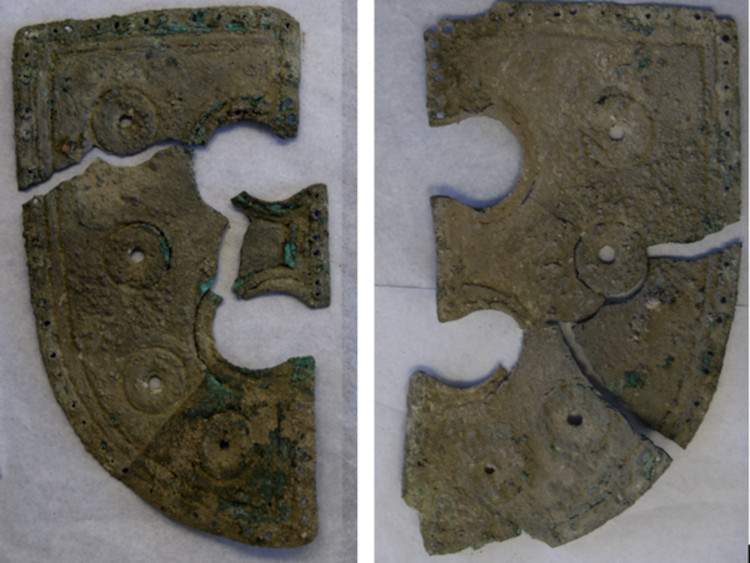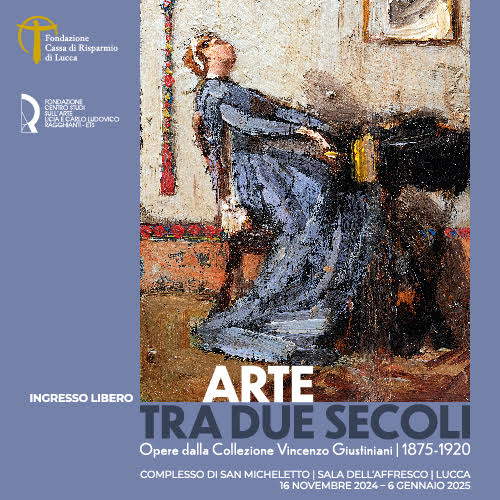Crete, extremely rare find: warrior armature found in a settlement context
In the archaeological excavation of Festòs, on the Greek island of Crete, researchers fromCa’ Foscari University of Venice have found thearmor of a warrior. The exceptional find, a bronze warrior panoply consisting of a shield umbo and fragments of a helmet and possibly a belt, occurred in the archaeological excavation conducted in July 2023 by the team of Professor Ilaria Caloi of the Venetian university, under the direction of Professor Pietro Militello of the University of Catania. Begun in 2022, the excavation was carried out under a concession from the Italian Archaeological School of Athens, directed by Professor Emanuele Papi, and authorized by Vassiliki Sythiakaki, head of the 13th Greek Ephoria.
In Greece, the discovery of a warrior panoply in a settlement context and not in a dedicated burial area is extremely rare. For this reason, researchers have wondered about the origin and function of these deposited weapons.
“The most appealing hypothesis, which only the continuation of the excavation will be able to confirm,” explains Ilaria Caloi, “is that the armor may be attributed to a local hero, honored within a cult area or cenotaph, in close connection with the founding of the polis of Phaistos between the 8th and 7th centuries BCE.”
Thebronze umbo found constitutes the central part of the shield, which must have been made of perishable material, probably leather. It has a central conical element with a long protuberance and an outer disc with a series of holes around the edge, which probably served for fastening. The bronze ring protruding internally at the central protuberance must have served the same function.
Of thehelmet the best-preserved part are the two paragnatids, or the bronze parts that protected each of the cheeks going down to the jaw. They are decorated with circular elements, and fitted with small holes for attachment to the helmet. They are currently being restored.
“The extraordinariness of the Festòs find,” Caloi added, "consists in the peculiar deposition of the weapons within a non-funeral context: in fact, they were found inside a pithos, a huge food container of almost 120 centimeters in maximum diameter, and hidden beneath an earthenware lid, which in turn was covered by a large fragment of a vase with decorative motifs in the form of jugs (oinoichoai) and running spirals. The pithos containing the weapons was found in the northeastern corner of a large room, Compartment OO-still under excavation-that opened to the east with an entrance equipped with a huge monolithic threshold 160 cm long.
It is likely that the area where the finds were made was an area dedicated to worship, a hypothesis also suggested by the ritual deposition of panoply parts and the physiognomy of the room."
Objects found in the immediate vicinity outside the large pithos also lead to support this hypothesis. These are two iron knives, a series of pouring vessels (aryballoi) of different sizes, dated between the 8th and 7th centuries B.C., and a small terracotta shield, overpainted in white. These are objects that hark back to the grave goods of a warrior tomb, but in this case could represent votive offerings in a shrine area. The site of the find is equally significant: it is located on the southwestern slopes of the hill of Kastri, the same on which the First Palace of Phaistos was built in the 19th century B.C., and immediately west of the palace’s sumptuous western courtyard.
Finds of armor like this are much more common in the rich trousseaus of Greek tombs. In fact, in Crete the best-preserved specimens come from the necropolis at Knossos, Mouliana (Siteia), and Eleutherna, and date between the 12th and 7th centuries BCE.
The best comparisons for the shield and paragnatids of Phaistos are found, however, in areas outside Crete: in Tomb XXVIII in Tiryns, Argolis, which can be dated to the Submycenaean period (11th cent. BCE.), and in Tomb 40 of Kourion-Kaloriziki in Cyprus; this is a confirmation of the extent to which Festos, at the turn of the Late Bronze Age and the beginning of the Iron Age, was still well embedded within a dense network of relations both with the Aegean world and with the much more distant lands of the eastern Mediterranean.
This discovery sheds light on a crucial period for the archaeological site of Phaistos, that of the founding of the polis. It is an important piece in reconstructing the history of a millennia-old center: founded in the fifth millennium B.C., Festòs first became a Minoan palace, in the same way as Knossos, then a Greek polis and remained an important center until 146 B.C., the year of its destruction by neighboring Gortina.
The archaeological site of Festòs, now a candidate for UNESCO World Heritage Site along with other Minoan palace complexes on the island, has been the focus of archaeological investigations by Ca’ Foscari University of Venice since the 1990s and continues to amaze with its findings.
 |
| Crete, extremely rare find: warrior armature found in a settlement context |
Warning: the translation into English of the original Italian article was created using automatic tools. We undertake to review all articles, but we do not guarantee the total absence of inaccuracies in the translation due to the program. You can find the original by clicking on the ITA button. If you find any mistake,please contact us.




























